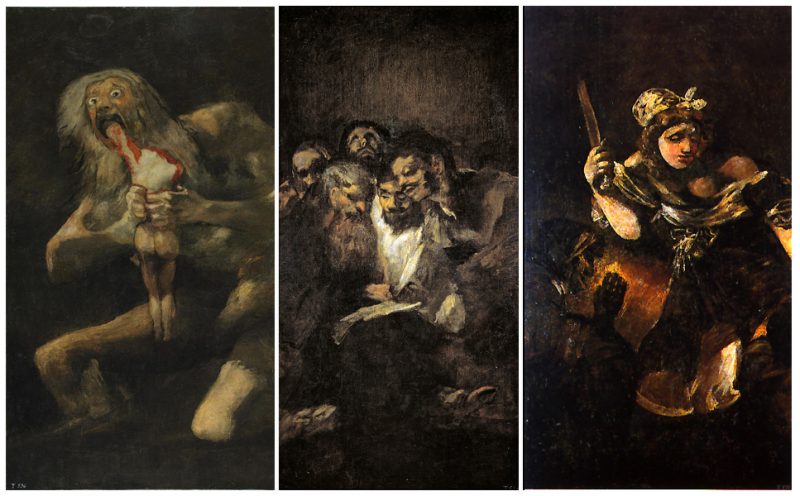The most important Spanish artist of the late eighteenth and early nineteenth century, Francisco Goya is widely known for his various series of paintings.
Throughout his life, he worked as a court painter, painted works for French patrons, and in 1799 he made a set of 80 prints called Los Caprichos, in which he described the foolishness of the Spanish society in which he lived. The last series of paintings that he did, at the age of 72, were the 14 so-called “Black Paintings.”
In 1819, Goya moved in a solid two-floor house, in the outskirts of Madrid, that was named The House of the Deaf Man (Quinta del Sordo), after the previous owner. When he was 46, he suffered from a debilitating illness which left him nearly deaf.
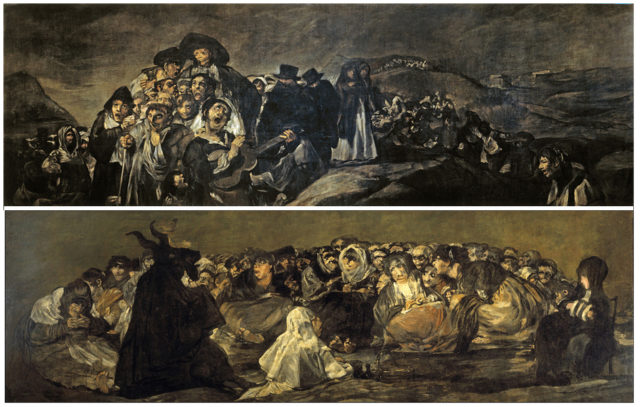
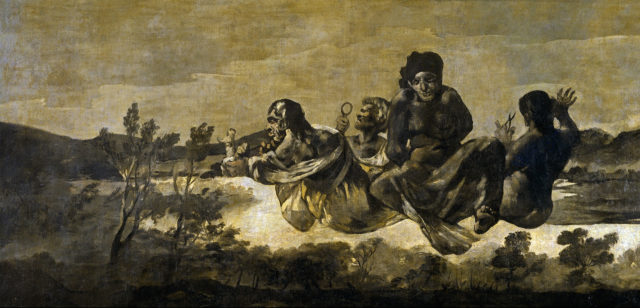
Truly disappointed with the current situation in Spain, which was the return of an oppressive and absolutist regime, he started to express intense and haunting themes on the plaster walls in his house. They were painted in oils on the walls of two rooms and transferred to canvas in 1873.
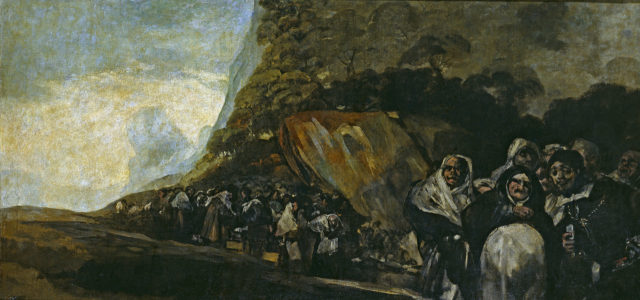
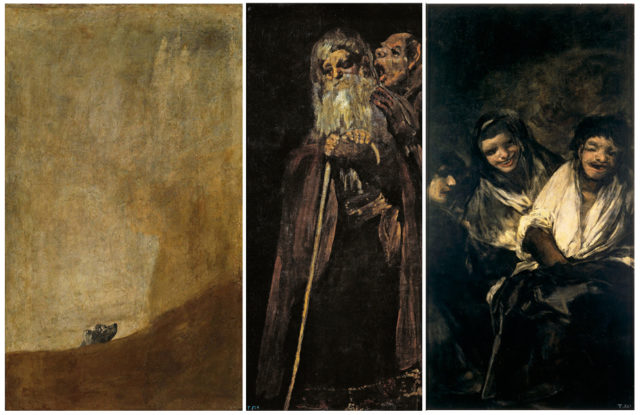
They are called the Black Paintings because of the dark tones and predominance of black but not all of them were gloomy. The two rooms of the house that he painted were the ground floor and the first floor. On the ground floor, there were six paintings including Witches’ Sabbath, A Pilgrimage to San Isidro, La Leocadia, Saturn Devouring His Son, Two Old Men, and Judith and Holofernes. On the first floor, there were seven paintings including Women Laughing, Fantastic Vision, The Dog, Men Reading, Atropos, Procession of the Holy Office, and Fight with Cudgels.
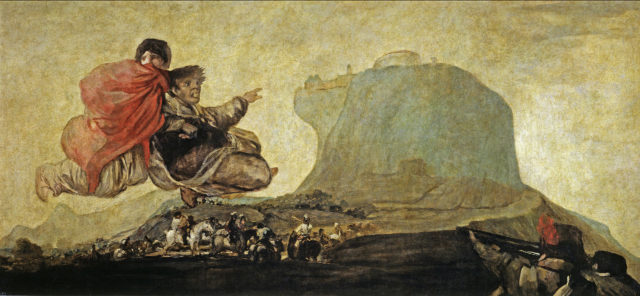
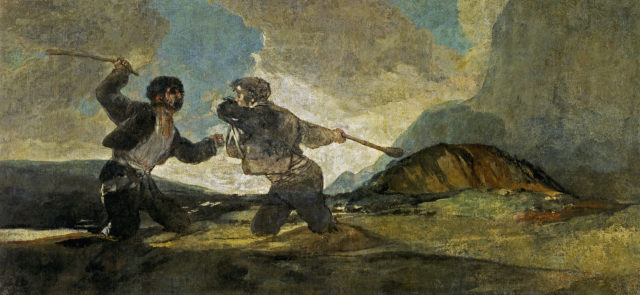
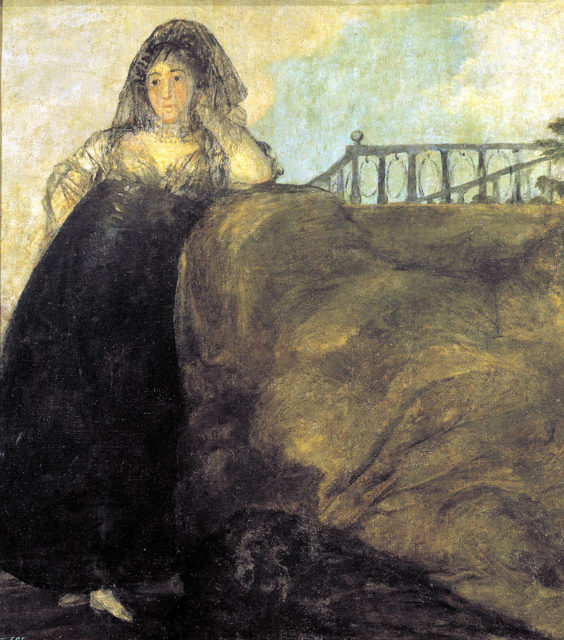
The paintings were named by art historians and they became the most celebrated pictures of Goya. It is believed that the paintings were finished in 1823, because that year Goya donated the property to his 17-year old grandson shortly before he went into hiding. The most famous of the fourteen paintings is the Saturn Devouring His Son which depicts the Greek myth of the Titan Cronus (in Roman Saturn).
Goya depicts this mythological character feasting upon one of his sons. Goya never intended to show these personal paintings to anyone and because of that, they were little known for half a century. There were only few art critics who wrote about them such as Charles Yriarte.
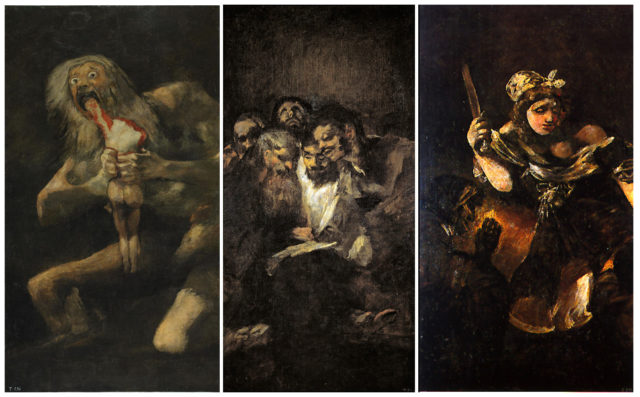
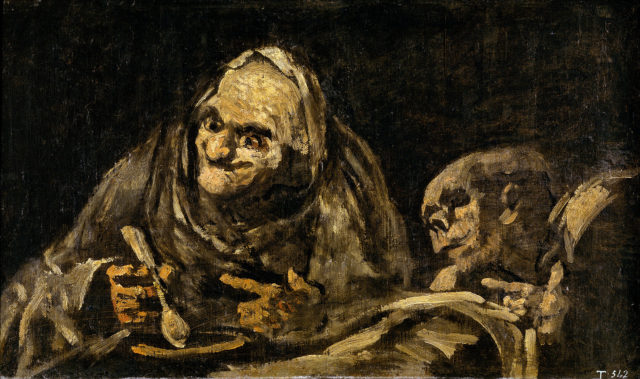
In 1874, the owner of the house Baron d’Erlanger ordered Salvador Martinez Cubells to transfer the frescoes to canvases. D’Erlanger wanted to sell the paintings at the Universal Exhibition of Paris in 1878.
However, in 1881, he donated the paintings to the Prado Museum, where they are currently exhibited. The Black Paintings are one of Madrid’s icons for which it is said that in that period of his life, Goya looked into hell and these paintings are what he saw.
